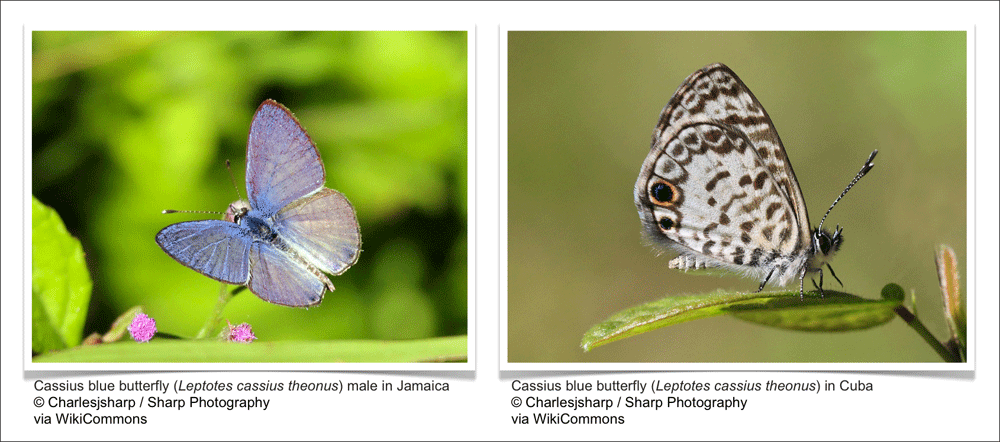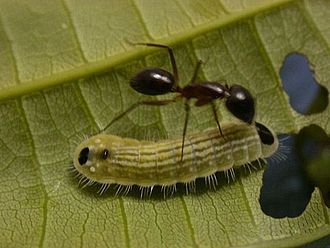Blues, hairstreaks and gossamer-winged butterflies
Kingdom: Animalia
Phylum: Arthropoda
Class: Insecta
Order: Lepidoptera
Family: Lycaenidae (Leach 1815)
Subfamily Curetinae - sunbeams
Subfamily Liphyrinae
Subfamily Lipteninae
Subfamily Lycaeninae - copppers
Subfamily Miletinae - harvesters
Subfamily Polyommatinae - blues
Subfamily Poritiinae
Subfamily Theclinae - hairstreaks, elfins
This is the second-largest family of butterflies, with nearly 6,000 species found around the World.
In Jamaica, 20 species have been recorded:
Lycaenidae butterflies are small, usually under 5 cm, and brightly coloured, sometimes with a metallic gloss.
Many species have a spot at the base of the tail and some turn around upon landing to confuse potential predators from recognizing the true head orientation. This causes predators to approach from the true head end resulting in early visual detection.

One of the more interesting characteristics of Lycaenidae is their larval association with ants: about 75% of all species associate with ants, either as mutualists, parasites, or predators. In some species, larvae are attended and protected by ants while feeding on the host plant, and the ants receive sugar-rich honeydew from the larvae as well as during the pupal stage. In other species, only the first few instars are spent on the plant, and the remainder of the larval lifespan is spent as a predator within the ant nest. It becomes a parasite, feeding on ant regurgitations, or a predator on the ant larvae.
To learn more about this characteristic, which is called myrmecophily, take a look at:
Pierce NE, Braby MF, Heath A, Lohman DJ, Mathew J, Rand DB, Travassos MA. 2002.
The ecology and evolution of ant association in the Lycaenidae (Lepidoptera.)
Annual Review of Entomology 47: 733-771.
 |
| Ant tending a Lycaenidae larva. From wikipedia |